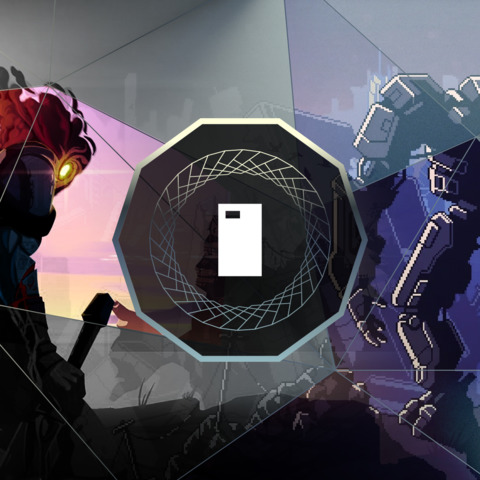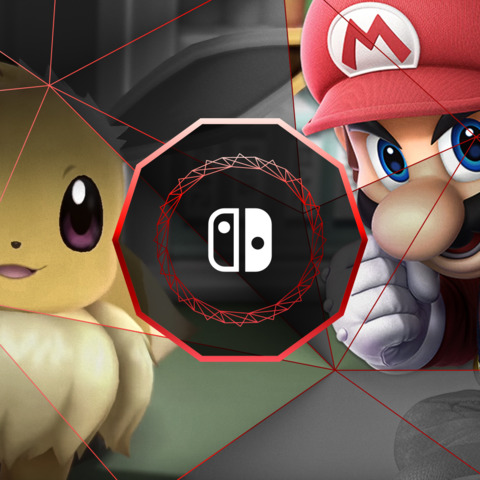Virtual reality gaming has been a tough field to navigate since its public debut in 2016, mostly because it was a brand-new technology that had immense hype leading up to the launch of three major platforms. Over time, we got to see VR experiences evolve from its early stages in terms of scale and ingenuity as developers built upon previous work and implemented new lessons learned. In 2018, there were a few flashes of brilliance that proved VR gaming doesn't need to chase realistic visuals or total physical immersion for a transformative experience, but rather fine executions of creative ideas using the tech that's already in place.
Despite a refined version of the HTC Vive and an entry-level standalone Oculus headset in the Oculus Go, PlayStation VR stole the show late in 2018. It might be bit surprising to think that as time marches on, the more primitive technology was home to the year's best VR games; PSVR still runs on PlayStation 4 hardware (Pro or otherwise), tracks players through the PlayStation Camera, and uses the unsophisticated Move controllers. But it's a testament to Sony's ability to secure exclusivity, establish a wider platform, and have developers deliver unique, compelling experiences. And if it wasn't for a handful of great games, 2018 would've been wholly underwhelming for VR.

PlayStation VR Comes Out On Top With Games
Japan Studio created something truly special for PSVR with Astro Bot: Rescue Mission. Its initial pitch may not sound like much: a seated 3D platformer where you control an "AR Bot" that was once a mascot for PSVR's Playroom mini-game suite. However, it turned out to be much more than that with one clever idea after another executed to near-perfection. You control the bot itself as you handle the DualShock motion controls to use gadgets and interact with the environment. These two elements effortlessly work in tandem to solve puzzles, navigate challenging platform sequences, and take down bosses. And it all came together thanks to color and charm instilled in the game's world and characters.
In 2018, there were a few flashes of brilliance that proved VR gaming doesn't need to chase realistic visuals or total physical immersion for a transformative experience, but rather fine executions of creative ideas using the tech that's already in place.
Leading up to the release of Tetris Effect, you may have been wondering, "What could Tetris do in 2018?" Well, producer Tetsuya Mizuguchi put that doubt to rest. By merging captivating Rez-like visuals, a momentous soundtrack, and an increasing challenge, the traditional Tetris gameplay was elevated to something greater than piecing a series of blocks together to clear lines, especially when played in VR. Each of its stages presented new visual themes and music genres that brought both an overwhelming intensity at times and a calming pace at others.
Why Are Video Game Adaptations Good Now? | Spot On Fallout 4 Next Gen Update Comparison Fallout 4 Steam Deck Verified Gameplay ALIEN: Rogue Incursion - Announcement Teaser Trailer Stellar Blade - 13 Things I Wish I Knew S.T.A.L.K.E.R. 2: Heart of Chornobyl — Official "Not a Paradise" Trailer Manor Lords - Official Medieval City Builder/RTS Launch Trailer Honkai: Star Rail - "Then Wake to Weep" | Version 2.2 Trailer Devil May Cry: Peak Of Combat | Dante: Blazing Tempest Gameplay Trailer SAND LAND — Official Launch Trailer Sea of Thieves Season 12: Official Content Update Video Stellar Blade - Hard Mode No Damage Gigas Boss Gameplay
Please enter your date of birth to view this video
By clicking 'enter', you agree to GameSpot's
Terms of Use and Privacy Policy
Although we've seen tactical multiplayer FPS on PC VR platforms, Firewall Zero Hour showed that this style of game can work on PSVR, despite its relative technical limitations. Zero Hour is a slower-paced, multiplayer-only shooter that pits two teams of four against each other to complete objectives. It may have shortcomings in terms of map design, progression, downtime between matches, but it's a unique PSVR experience that also put the Aim controller to good use.
In August, Sony revealed that the PSVR had sold three million units, which is more than its direct competitors Oculus Rift and HTC Vive. It's not much of a surprise given the lower barrier to entry, and this install base means that VR games could thrive on Sony's console.
Multiplatform Games Made Special On PSVR
Moss first released on PSVR in February before arriving on Vive and Rift in June. The third-person 3D action platformer used a whimsical art style to get you invested in the fate of its cute little mouse protagonist named Moss. Developer Polyarc combined simple, yet clever combat mechanics and challenging puzzles which was a delight. But it used VR to great effect by presenting a grand sense of environmental scale and seamlessly integrating traditional DualShock controls and motion sensor capabilities.
Evasion came out on all three major platforms, but it's one of the few games that put the PlayStation Aim controller to use with its new cooperative FPS experience.

Lastly, you can't bring up VR games without mentioning Beat Saber, an exhilarating rhythm game that has you slicing blocks to the beat of a song. Each block requires you to chop it in a certain direction using the left and right VR controllers, inducing a dance-like flow that feels gratifying regardless of difficulty. Beat Saber had an official release on PS4, but it's in early access for Vive and Rift. Unique to the PC versions however, is the ability to import your own songs for custom tracks in game, though that feature is still in development.
HTC Vive Pro, Wireless VR, And The Price Of Luxury
In May, HTC launched the Vive Pro, which is a higher resolution version of the original hardware with a few welcome ergonomic tweaks. The Vive Pro bumped up the original resolution from 2160x1200 to 2880x1600, which may not sound like much, but this translated to a noticeable improvement in visual clarity. Vive Pro's head strap was a vast improvement over the original design and made it much easier to put on and more comfortable with better weight distribution. And the built-in earphones were a critical addition since it was one less thing to worry about when using the Vive.
The big problem, though: price. The Vive Pro costs $800, and that's just for the headset alone. It really is reserved for the enthusiast that has money to blow since it also requires you to have a Vive setup already, let alone a capable gaming PC. And if you don't, then you'll be shelling out $1400 for the full Vive Pro package. It's an impressive piece of technology, but it wasn't going to transcend what the industry already had, especially for its asking price.
Why Are Video Game Adaptations Good Now? | Spot On Fallout 4 Next Gen Update Comparison Fallout 4 Steam Deck Verified Gameplay ALIEN: Rogue Incursion - Announcement Teaser Trailer Stellar Blade - 13 Things I Wish I Knew S.T.A.L.K.E.R. 2: Heart of Chornobyl — Official "Not a Paradise" Trailer Manor Lords - Official Medieval City Builder/RTS Launch Trailer Honkai: Star Rail - "Then Wake to Weep" | Version 2.2 Trailer Devil May Cry: Peak Of Combat | Dante: Blazing Tempest Gameplay Trailer SAND LAND — Official Launch Trailer Sea of Thieves Season 12: Official Content Update Video Stellar Blade - Hard Mode No Damage Gigas Boss Gameplay
Please enter your date of birth to view this video
By clicking 'enter', you agree to GameSpot's
Terms of Use and Privacy Policy
Perhaps more impactful than a higher-res headset is wireless capability. 2018 saw the launch of the Vive Wireless Adapter, and introduced a high-fidelity untethered experience with minimal input lag. But again like most things HTC Vive, it's expensive: the Wireless Adapter currently goes for $300 alone.
Oculus Aims For Wider Markets With Standalone Headsets
Oculus has expanded beyond the Rift platform by launching the Oculus Go. It's a standalone headset that delivers a lighter VR experience, not intended for traditional gaming. The Go is part of the Oculus ecosystem regardless and has a few standout games like Thumper and Republique, but its controller and specs means it's limited in terms of gaming.
It bears repeating: VR gaming is still in its early stages and is still building for the future.
Oculus Go is also indicative of where the company is going in terms of VR tech. During its Oculus Connect 5 event in September, it announced that Oculus Quest (formerly Project Santa Cruz) would launch in Spring 2019 for $400, which is another standalone headset that'll have full range of motion, fully featured controllers, and more powerful hardware. Powered by a Snapdragon 835 processor, Quest isn't quite as powerful as a minimum spec Rift setup, but the prospect of a completely untethered VR experience that makes few concessions is enticing.
Verdict
At least in 2018, VR gaming was about a couple of great ideas coming to fruition. PSVR separated itself from its PC competitors late in the year by offering a platform that gave rise to a few amazing experiences like Astro Bot and Tetris Effect. It also remains the cheapest VR platform with the slimmest hardware requirements, and in turn, a significantly lower barrier to entry. But VR didn't offer much outside of that. Advances were made technologically with HTC pushing higher fidelity and Oculus introducing a standalone headset, but neither was intended to serve a wider gaming audience, at least for now.
It bears repeating: VR gaming is still in its early stages and is still building for the future. As developers continue to push VR forward and new games come out, we'll get closer to seeing VR's full potential in games. 2018 wasn't the best showcase of that, but developers are still investing the time into VR platforms, and we're hoping that comes to light in 2019.
| The Good | The Bad |
|---|---|
| + A few amazing PSVR games that made the most of the hardware capabilities | - Overall lack in impactful games, especially for PC VR platforms |
| + Astro Bot: Rescue Mission is the big game VR needed | - HTC's new hardware, while impressive, is far too expensive |
| + Advances in tech this year lay the groundwork for the future | - Did we mention an overall lack of games? |




